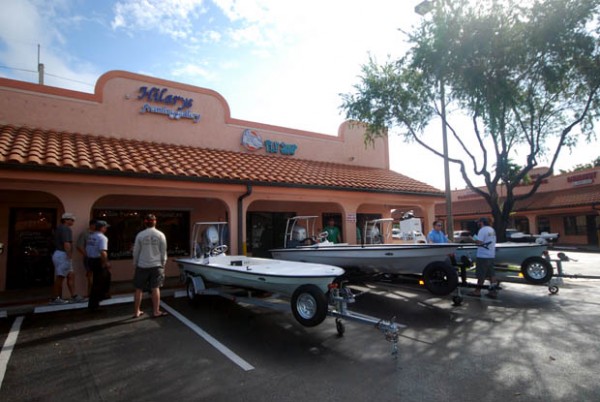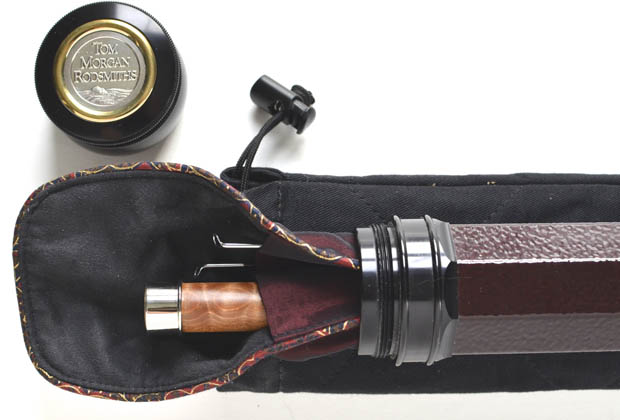When someone asks: What does a fly rod cost? It’s a lot like asking how much a car costs. There is a huge range…
[dropcap]O[/dropcap]n the fly rod issue, like cars, there’s a bunch of qualifiers. A 10 year old girl that wants to learn to fly fish has a rod need that is different from those of a Federation of Fly Fishers Certified Casting Instructor who is looking for a new tarpon rod. Similarly, a 40 year Montana trout guide’s new 4-weight fly rod need is different from a skilled 75 year old’s new 4-weight fly rod need, and so on.
Fortunately, there are some loosely defined definitions that aid choices. Unfortunately, they’re subjective. A fly rods “action” is one of the definitions. The action determines where the rod bends with a given amount of weight. The actions are fast action, which refers to the upper 1/3 of the rod, or tip, doing the bending when cast; mid-flex action is just that, the rod when cast bends all the way into the middle of the rod, and slow, of course, all the way into the butt of the rod – sometimes called a “buttery” action. Buttery, a word believed coined by the “new generation” of retro fiberglass rod makers.

The Fly Shop of Miami is a perfect example of a place to go to get clued in on fly rods. David Olsen is the Managing Partner. He is also a Certified Master Casting Instructor, casting tournament champion and Umpqua Commercial Fly Tyer.
It’s not a science. And as Lefty said: “All fly rods are a compromise.”
While fly rods companies’ rods have the exact same ‘action’ choices they’ll vary in performance. The actions are fast, medium and slow. Their ad words are like any ‘same as’ product competing in the marketplace. There’s a need to distinguish, attract and sell and so we have ad words.
If you were to cast “fast action” fly rods of the same weight designation from a dozen different high-end rod makers, you’d have differing action performances to choose from. That’s not a mark against any rod maker. It just happens to be that “stiffer” or more “buttery” are vague and accurately undefinable – like saying “tall” which is also not exactly definable. It does, however, help but for the beginner is doesn’t help in the least bit.
Choosing made easier, go to a dedicated fly shop
Reliable advice on choosing a suitable fly rod for your intended use of it is probably best answered at full service fly shop. While it’s true they’re selling what they have, the word full service means they sell $850 rods, lower cost rods and beginner combos (rod, reel, line and leader) at $125 or so. The shop is more interested in having you as future customer so they’re not going to used car sales you.
When in the market for a rod that matches what you’ll be fishing for, ask the fly shop sales-person to let you demo a few rods in the weight you and the salesperson have settled on.
Full service fly shops have plenty of set-ups of lined and leadered reels from 3- to 12-weights. Don’t be shy about asking to demo a few – even come back a week later and give it another go.
The fly rod you buy, if a good one, will serve you for the rest of your life. Choose wisely and don’t forget to ask a lot of questions. Most fly shop sales folks are really into fly fishing and know what they’re talking about.
A really helpful aid in choosing your next fly rod is grain weights of fly lines
Industry standards established by the American Fly Fishing Trade Association (AFFTA) regarding fly line weights are helpful in determining what rod to buy. However, that said, there’s much more to it: line tapers, over-lining, underlining, density, species you intend to fish for and fly sizes most likely to be used. Nonetheless, the following chart is a useful aid.
Number Designation / Standard Weight / Margin For Error
1-Weight / 60 / 54-66
2-Weight / 80 / 74-86
3-Weight / 100 / 94-106
4-Weight / 120 / 114-126
5-Weight / 140 / 134-146
6-Weight / 160 / 152-168
7-Weight / 185 / 177-193
8-Weight / 210 / 202-218
9-Weight / 240 / 230-250
10-Weight / 280 / 270-290
11-Weight / 330 / 318-342
12-Weight / 380 / 368-392
The American Fly Fishing Trade Association (AFFTA) fly line weight designations are for the first 30-feet of line as measured in grains. With our distaste for metrics well established, the fly line manufacturers adopted an easy to remember chart to help anglers quickly determine fly line weight. In addition to its helpfulness in assisting a rod purchase, it also proves worthwhile determining what rod and line weights match up with what you’ll be fishing for.
Go to AFFTA chart for both single handed and two handed fly lines weight designations.


